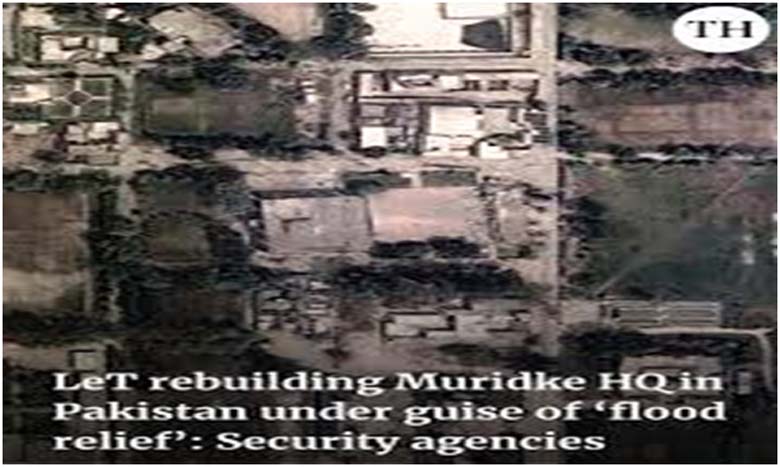Will Cities become Next Frontiers for Terrorists?
The car blast that tore open the evening tranquillity near the Red Fort Metro Station in the national capital on 10 November 2025 has ruptured more than a decade of peace in the NCR. The blast has killed and wounded several innocents. The character and methodology of the attack indicate that this was not an isolated incident but a launch of Proxy War 2.0. It has its signature of Pakistan-based terror groups reorganised following the setback they suffered during Operation Sindoor 1.0. The question remains – Does Proxy War 2.0 merit Op Sindoor 2.0?
The explosive found by forensic teams points to ammonium nitrate, which is associated with the previous recoveries related to Jaish-e-Mohammad (JeM) networks in the region of Haryana and the National Capital Region. The intelligence agencies’ preliminary inputs indicate that there is a connection between the Kashmir Valley proxy war and the sleeper cells of Delhi. What all these are pointing to is not a new network, but the reactivation of old radical sleeper cells, some educated professional Islamists who have infiltrated the society and its institutions, awaiting clearance to strike terror.
The Aftershocks of Operation Sindoor
Operation Sindoor 1.0, launched in May 2025, was India’s direct response to the Pahalgam massacre. The strikes near Bahawalpur hit the heart of JeM’s structure. The message to Islamabad was unmistakable that terror sanctuaries would invite consequences. What followed, however, was predictable. JeM absorbed the blow and restructured, moving its operational assets further west into Khyber Pakhtunkhwa under ISI supervision. The shift aimed to reduce exposure to Indian strikes while preserving the organisation’s command and communication grid.
Pakistan’s government soon announced public funds for “religious rehabilitation” in affected regions. Intelligence intercepts later confirmed that part of this allocation was diverted to banned outfits, effectively financing the reconstruction of terror infrastructure. This manoeuvre, masked as community rebuilding, ensured the network’s survival and continuity.

One of the more disturbing adaptations has been the creation of an all-women’s wing — Jamaat-ul-Mominat under Sadiya Azhar, sister of Masood Azhar. Recruitment began quietly across Bahawalpur, Karachi, and Muzaffarabad, targeting educated women through online radicalism. The arrest of Dr Shaheena Sayeed in Faridabad exposed the Indian link in this network, demonstrating how ideology has penetrated professional and academic spaces. This represents the new face of urban extremism: socially blended, digitally connected, and professionally credible.

Narratives of Revenge and Psychological Warfare
Within weeks of the Bahawalpur strikes, JeM’s propaganda magazine Medina began publishing editorials promising revenge. The Red Fort bombing fits that script. The site was no random choice; it is a symbol of India’s sovereignty, targeted to invoke fear and draw global attention. The aim was psychological, to suggest reach, endurance, and defiance.
The terror narrative now even extends eastward. Lashkar-e-Taiba, through its commander Saifullah Saif, has hinted at utilising Bangladeshi territory for subversive operations. Coinciding with these statements, a Pakistan Navy vessel’s port call in Chittagong under the pretext of “routine engagement” cannot be ignored. It fits into a pattern of strategic outreach aimed at establishing alternative corridors for influence and infiltration. The coordination between ISI and sympathetic Islamist elements in Bangladesh mirrors earlier phases of Pakistan’s proxy playbook.
Urban Terror: The New Battleground
India’s counter-terror apparatus has quietly prevented several plots in recent months. Yet, the 10/11 attack proves that the enemy has evolved faster than our comfort zone. Today’s terror threat is not limited to infiltration across borders. It grows within cities and among professionals, amplified by digital radicalisation and encrypted communication networks.

The new terrorist profile blends intellect with ideology; professionals who wear normalcy as camouflage. The Pulwama-linked doctor connected to the Delhi case exemplifies this shift. Radicalisation now thrives in spaces of learning and employment rather than isolated camps. The state’s response, therefore, must extend beyond security perimeters into the cognitive and digital arenas.
Recalibrating the Strategic Response
Four dimensions merit immediate focus: intelligence dominance, urban security reinforcement, empowering an alert society and diplomatic escalation.
1. Intelligence Reform: India’s intelligence focus must shift from terrorists to enablers; the recruiters, funders, and digital propagandists who shape narratives and build cells. Tracking precursor materials such as ammonium nitrate, detonators, and electronic components must become an institutional reflex, backed by shared databases across agencies. Real-time monitoring of encrypted applications and dark-web activity tied to radical groups requires both legal and technological upgrading.
2. Urban Security Redesign: India’s metro hubs, markets, and religious centres remain high-value targets. AI-based anomaly detection and faster forensic deployment teams should become standard operating elements. The blast also underscores the need for resilient civic infrastructure capable not only of prevention but of rapid recovery and continuity of normal life post-incident.
3. Strategic and Diplomatic Leverage: International pressure on Pakistan must be institutional, not episodic. India should pursue renewed Financial Action Task Force (FATF) scrutiny on Islamabad’s terror financing networks, and mobilise like-minded partners to sustain that pressure. Military deterrence calibrated, precise, and attribution-based remains an imperative. The credibility of India’s proactive doctrine, demonstrated in Operation Sindoor, must be preserved through readiness for repeat strikes if provocation continues.
4. National and Societal Resilience: The war against terror is as much about society as it is about security forces. When panic spreads, the adversary wins; when hate breeds within a society, communal divides begin. Building a National Citizen Security Culture is therefore essential. Awareness campaigns, community liaison cells, and institutionalised reporting platforms can convert ordinary citizens into first-line warriors. Information warfare now forms a key flank of terrorism. Online misinformation, communal distortion, and sensationalised narratives are designed to fracture public trust. The response lies in credible communication — timely, factual, and free of political colour. Confidence in institutions must be maintained through transparency and prompt action.
A Test of Resolve
The 10/11 blast underlines an enduring truth: Pakistan’s proxy networks never vanish; they mutate. The grass on the mowed lawn only grows again with new weeds. It requires a deep root extraction treatment. The answer lies in a proactive, pre-emptive and ‘Iron Fist’ approach to neutralise threats before they materialise.
The Nation must respond with composure, not outrage, through a blend of precision intelligence, calibrated force, and societal unity. The line drawn by Operation Sindoor must hold clear, uncompromising, and visible to those who still believe terror can coerce the Indian state. The nation must adapt to the changing face of terrorism. The challenge now is to confront an evolving menace with strategic assertion without losing moral or political clarity.
ABOUT THE AUTHOR
 Lieutenant General A B Shivane, is the former Strike Corps Commander and Director General of Mechanised Forces. As a scholar warrior, he has authored over 200 publications on national security and matters defence, besides four books and is an internationally renowned keynote speaker. The General was a Consultant to the Ministry of Defence (Ordnance Factory Board) post-superannuation. He was the Distinguished Fellow and held COAS Chair of Excellence at the Centre for Land Warfare Studies 2021 2022. He is also the Senior Advisor Board Member to several organisations and Think Tanks.
Lieutenant General A B Shivane, is the former Strike Corps Commander and Director General of Mechanised Forces. As a scholar warrior, he has authored over 200 publications on national security and matters defence, besides four books and is an internationally renowned keynote speaker. The General was a Consultant to the Ministry of Defence (Ordnance Factory Board) post-superannuation. He was the Distinguished Fellow and held COAS Chair of Excellence at the Centre for Land Warfare Studies 2021 2022. He is also the Senior Advisor Board Member to several organisations and Think Tanks.








